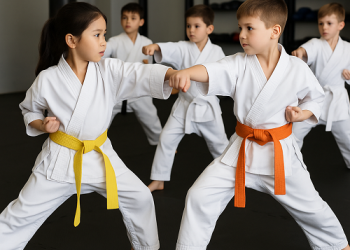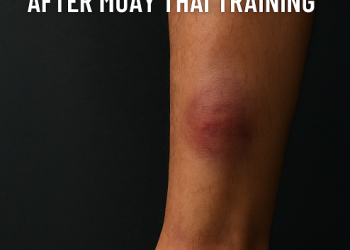The flying push kick, also known as the flying teep, is a dynamic and powerful technique in Muay Thai that combines the mechanics of a traditional teep with the momentum of a jump. This advanced move is designed to surprise opponents, cover distance rapidly, and deliver a forceful strike that can disrupt balance or even knock an adversary off their feet.
Mechanics and Execution
Executing a flying push kick requires precise timing, balance, and explosive power. The practitioner begins by initiating a jump, propelling themselves forward while simultaneously chambering the kicking leg. As the body moves through the air, the kicking leg extends, targeting the opponent’s midsection or chest with the ball of the foot. The non-kicking leg trails behind, aiding in balance and momentum. Proper arm positioning is crucial: the arm opposite the kicking leg should remain high to protect the face, while the same-side arm swings downward to generate additional force and maintain equilibrium.
Strategic Applications
The flying push kick is particularly effective against opponents who are advancing aggressively. By launching into the air, a fighter can close the gap swiftly, catching the opponent off-guard and halting their forward momentum. This technique can also be used to initiate attacks, create space, or as a counter to an opponent’s strike. Its unexpected nature makes it a valuable addition to a fighter’s arsenal, especially when aiming to disrupt the rhythm of the bout.
Training and Considerations
Given its complexity, the flying push kick should be practiced under the guidance of a skilled instructor. Drills focusing on jump mechanics, core strength, and balance are essential to execute this move safely and effectively. It’s important to ensure that the landing is controlled to prevent injury and to maintain readiness for subsequent movements.
While the flying push kick is a spectacular and effective technique, it also carries risks. If mistimed or poorly executed, it can leave the practitioner vulnerable to counters. Therefore, it should be employed judiciously, with consideration of the opponent’s tendencies and the flow of the match.
Incorporating the flying push kick into one’s Muay Thai repertoire can enhance offensive capabilities and add an element of unpredictability. With diligent practice and strategic application, this technique can be a formidable tool in both competitive and self-defense scenarios.
The flying push kick, also known as the flying teep, is a dynamic and powerful technique in Muay Thai that combines the mechanics of a traditional teep with the momentum of a jump. This advanced move is designed to surprise opponents, cover distance rapidly, and deliver a forceful strike that can disrupt balance or even knock an adversary off their feet.
Mechanics and Execution
Executing a flying push kick requires precise timing, balance, and explosive power. The practitioner begins by initiating a jump, propelling themselves forward while simultaneously chambering the kicking leg. As the body moves through the air, the kicking leg extends, targeting the opponent’s midsection or chest with the ball of the foot. The non-kicking leg trails behind, aiding in balance and momentum. Proper arm positioning is crucial: the arm opposite the kicking leg should remain high to protect the face, while the same-side arm swings downward to generate additional force and maintain equilibrium.
Strategic Applications
The flying push kick is particularly effective against opponents who are advancing aggressively. By launching into the air, a fighter can close the gap swiftly, catching the opponent off-guard and halting their forward momentum. This technique can also be used to initiate attacks, create space, or as a counter to an opponent’s strike. Its unexpected nature makes it a valuable addition to a fighter’s arsenal, especially when aiming to disrupt the rhythm of the bout.
Training and Considerations
Given its complexity, the flying push kick should be practiced under the guidance of a skilled instructor. Drills focusing on jump mechanics, core strength, and balance are essential to execute this move safely and effectively. It’s important to ensure that the landing is controlled to prevent injury and to maintain readiness for subsequent movements.
While the flying push kick is a spectacular and effective technique, it also carries risks. If mistimed or poorly executed, it can leave the practitioner vulnerable to counters. Therefore, it should be employed judiciously, with consideration of the opponent’s tendencies and the flow of the match.
Incorporating the flying push kick into one’s Muay Thai repertoire can enhance offensive capabilities and add an element of unpredictability. With diligent practice and strategic application, this technique can be a formidable tool in both competitive and self-defense scenarios.





